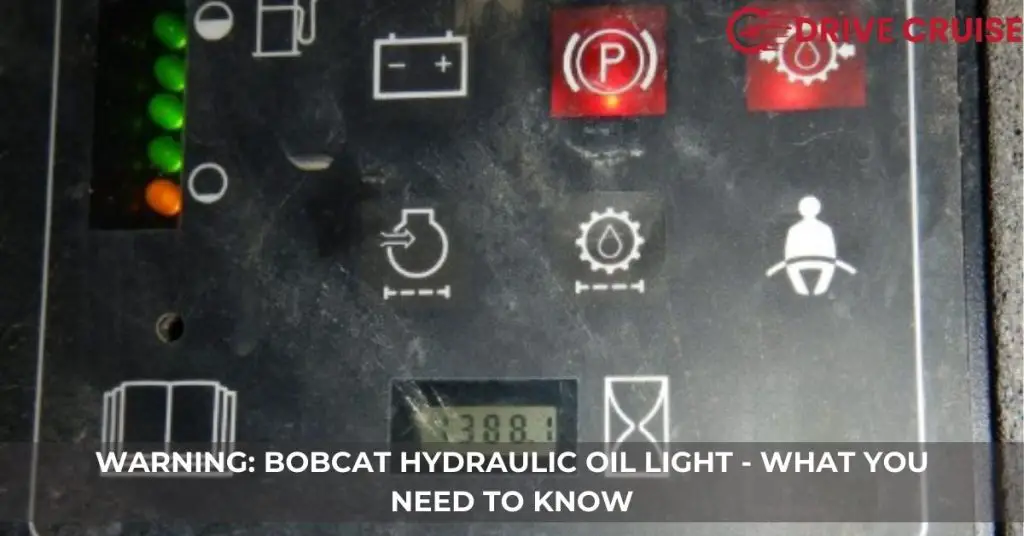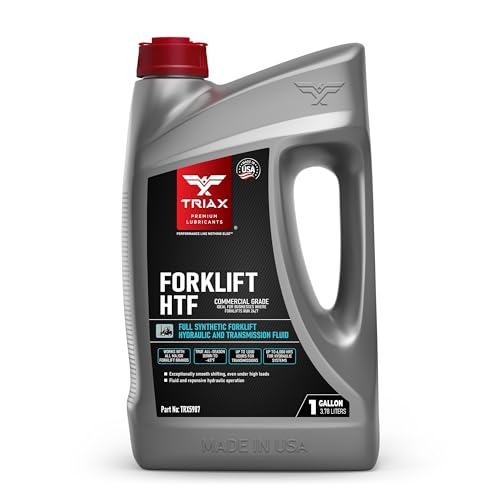When operating heavy machinery like a Bobcat, it’s crucial to keep an eye on all warning lights that flicker on the dashboard. Among these, the hydraulic oil warning light is one not to be ignored. It’s our machine’s way of calling for help, indicating something’s amiss with the hydraulic system, which is the heart of its operation.
Understanding what triggers this light can save us from a heap of trouble, ensuring our Bobcat runs smoothly and efficiently. Whether you’re a seasoned operator or new to the world of heavy machinery, recognizing the signs and knowing how to respond is key. Let’s dive into the essentials of the Bobcat hydraulic oil warning light, shedding light on its importance and how to tackle it head-on.
Common Causes of Hydraulic Oil Warning Light Activation
Understanding the factors that trigger the hydraulic oil warning light on a Bobcat is crucial for maintaining its performance. Let’s explore the most common causes.
- Low Hydraulic Oil Level: This is the primary reason the warning light activates. Insufficient oil in the system can lead to a drop in hydraulic pressure, affecting the Bobcat’s operational capabilities. Regularly checking and maintaining the oil level ensures the machine runs smoothly.
- High Hydraulic Oil Temperature: Excessive heat can cause the oil to thin, reducing its ability to lubricate the system effectively. This can occur during prolonged use or on particularly hot days. Monitoring the machine’s temperature and giving it a break when needed can prevent overheating.
- Contaminated Hydraulic Oil: Dirt, debris, or water entering the hydraulic system can contaminate the oil, triggering the warning light. Contamination can severely impact the system’s efficiency and may lead to costly repairs. Ensuring proper sealing and filtration helps keep the oil clean.
- Air in the Hydraulic System: Air bubbles in the hydraulic fluid can cause erratic movements and reduced power in the Bobcat’s hydraulic functions. Bleeding the system to remove air ensures optimal operation.
- Hydraulic Oil Leak: Any leaks within the hydraulic system can cause a drop in oil level and pressure, leading to the activation of the warning light. Regular inspections for leaks can prevent this issue.
Steps to Troubleshoot the Bobcat Hydraulic Oil Warning Light
Following a structured approach to troubleshoot the Bobcat hydraulic oil warning light ensures quick identification and resolution of the underlying issues. Let’s delve into these practical steps.
Check the Oil Level
The first step involves checking the hydraulic oil level. A low oil level is a common cause for the warning light to activate. Ensure the machine is on a level surface to get an accurate reading, then locate and examine the hydraulic oil level gauge. If the oil level is low, add the recommended type of hydraulic oil until it reaches the specified level.
Inspect for Leaks
Inspecting the machine for any oil leaks is essential. Look closely at the hydraulic lines, fittings, and seals for signs of leakage. Leaks not only trigger the warning light but also lead to a decrease in hydraulic efficiency. If you find any leaks, it’s crucial to repair them immediately to prevent further damage.
Evaluate Oil Quality
Evaluating the quality of the hydraulic oil is next. Contaminated oil can cause the warning light to illuminate. Check the oil for any signs of contamination, such as discoloration or the presence of debris. If the oil appears dirty or contaminated, it’s advisable to replace it with fresh oil of the correct specification.
Monitor the Oil Temperature
Monitoring the hydraulic oil temperature is another vital step. High oil temperature can activate the warning light. Allow the Bobcat to cool down, then check if the warning light turns off. Continuous operation at high temperatures requires further investigation to identify and rectify the source of the overheating.
Check for Air in the Hydraulic System
Lastly, check for air in the hydraulic system. Air entrapment can lead to erratic operation and trigger the warning light. Bleeding the system to remove any air is necessary for maintaining optimal hydraulic performance.
Preventive Measures to Avoid Future Hydraulic Oil Warning Light Issues
After covering how to troubleshoot the Bobcat hydraulic oil warning light effectively, we’ll dive into preventive measures. These steps are crucial for avoiding future issues that could lead to the warning light’s activation. By adhering to these practices, operators can ensure their Bobcat remains in top operational condition.
- Regular Maintenance Checks: Establishing a routine for checking the hydraulic oil level, quality, and temperature ensures issues are spotted before they escalate. Regular inspections can catch leaks, contamination, and other problems early on.
- Use the Correct Hydraulic Oil: Always opt for the hydraulic oil specified by the manufacturer. Using the right oil not only prolongs the life of the hydraulic system but also maintains its efficiency and reliability.
- Cleanliness is Key: Ensure the area around the hydraulic oil fill cap and the hydraulic system components are clean before performing any maintenance. This practice prevents contaminants from entering the system, which can lead to malfunctions.
- Monitor Hydraulic Oil Temperature: Avoid operating the Bobcat in extreme temperature conditions without proper preparation. If operating in high-temperature environments, consider using a hydraulic oil with a higher viscosity grade to maintain optimal performance.
- Air Purge Procedures: Familiarize oneself with the proper procedure to purge air from the hydraulic system. Air in the hydraulic system can cause a variety of issues, including the activation of the hydraulic oil warning light.
- Professional Inspections: Lastly, having a professional inspect the hydraulic system periodically can help identify issues that may not be apparent during routine checks. Specialists can offer insights and preventative solutions that extend the system’s life and efficiency.
Professional Assistance and When to Seek It
After covering the preventative measures for keeping the hydraulic oil warning light off in a Bobcat, it’s crucial to recognize situations that call for professional help. Not all problems can be solved through routine maintenance and troubleshooting; sometimes, the expertise of a trained technician is required to prevent further damage.
Identifying the right time to seek professional assistance ensures the longevity and reliability of the Bobcat’s hydraulic system. Here are key indicators that it’s time to call in an expert:
- Persistent Warning Light: If the hydraulic oil warning light remains on despite troubleshooting the common causes and performing the recommended preventive measures, it’s a clear sign that the issue requires a professional’s diagnosis.
- Recurrent Hydraulic Issues: Facing repeated hydraulic problems, like slow operation or unexpected noise from the hydraulic system, indicates underlying issues that need a thorough check-up from a technician.
- Complex Repairs: When the problem involves complex components such as the hydraulic pump or control valves, attempting a DIY repair can cause more harm than good. Such situations necessitate the skills of a professional who is trained in handling intricate machinery.
- Preventive Maintenance: Even if the Bobcat is operating smoothly, having a professional perform regular, detailed inspections can uncover potential issues before they escalate into major problems, saving time and money in the long run.
Related Posts:
- Warning: Bobcat Hydraulic Oil Light – What You Need to Know
- Decoding Bobcat Warning Light Symbols: A Friendly Guide to Their Meaning
- Forklift Warning Light Symbols: A Guide to Understanding and Staying Safe
- Toyota Forklift Warning Light Symbols: What Do They Mean?













